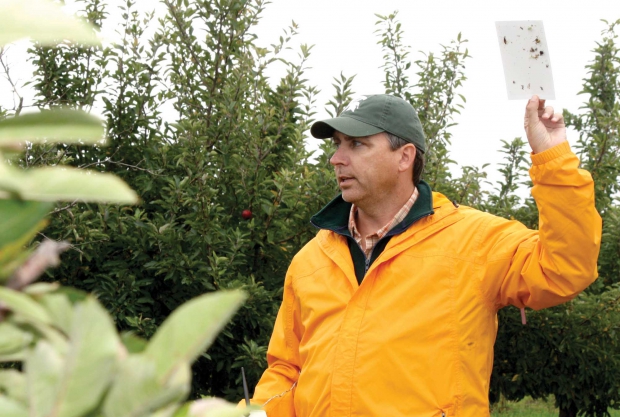
Peter McGhee explains how pictures of sticky traps can be examined on a computer. (Courtesy SemiosBio Technologies Inc.)
Researchers at Michigan State University used the SemiosBio automated “camera trap” monitoring system last season as a research tool.
According to Dr. Larry Gut and his associate Peter McGhee, besides wanting to see what insects land on their sticky traps, they want to know when they land.
“We want to find out when insects fly,” Gut said.
While a grower might use the system to detect when damaging insects first appear in an orchard, and thus may only need one picture every day, the researchers used their camera trap to take several pictures each day.
“I’m trying to relate low temperatures and insect activity,” Gut said. “Most insects don’t fly under 60˚F.,” he said. So, when using aerosol puffers for mating disruption, for example, it makes sense to synchronize the emissions to the time of insect activity.
Using the Semios system allowed them to make repeated observations of several traps without physically visiting them. Pictures were transmitted to the computer by cell phones connected in a repeater line-of-sight network.
Using the Semios computer program, McGhee said, photographs of the sticky trap cards could be examined and insects on the trap “marked” by clicking with the mouse, McGhee said,. The sticky card could be viewed repeatedly, without having to physically scrape off insects counted previously.
In their research, traps were located next to orchard weather stations so insect activity could be correlated to time, temperature, wetness, etc.
Two companies offer automated lepidoptera monitoring traps, McGhee said. One is SemiosBio (semios.com/ipm) and the other Spensa technologies with its Ztrap (www.spensatech.com).






Leave A Comment